Six major capabilities: DAS Solar flexible bracket is ideally suited to challenging terrain
2023-12-28
In China, the topography tends to be lower from west to east, particularly in the central and western regions, where vast expanses of land await development. With abundant solar potential but challenging topographical conditions, how can these idle lands be effectively integrated into photovoltaics? The flexible brackets for photovoltaics application has been unveiled by DAS Solar.
High flexibility
Compared to traditional brackets, the DAS Solar flexible bracket is loaded primarily by tension cables. Through "suspension, tensioning, bracing, and compression," it provides a structural bracket to the modules by applying tension between fixed points at both ends to pre-stressed steel wire ropes.
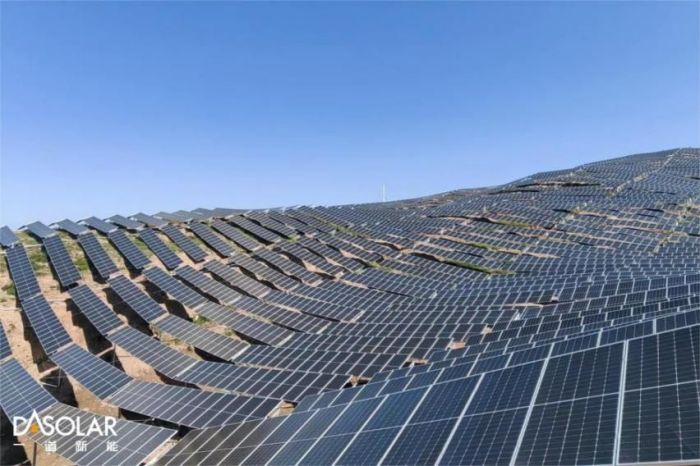
Large span
A DAS Solar flexible bracket counteracts high structural loads by applying pre-tension to a steel cable, allowing it to span between 20m and 40m by controlling cable strength and deformation. Construction challenges associated with traversing slopes and ravines faced by conventional photovoltaic bracket is effectively addressed by a maximum continuous length of 1500m from east to west. DAS Solar flexible bracket is also capable of freely adjusting the module tilt based on sunlight requirements beneath the module in "photovoltaic+" applications. With the flexible drive system, it is able to track tilt from -10° to 45°, significantly enhancing PV plant efficiency over fixed brackets by more than 10%.
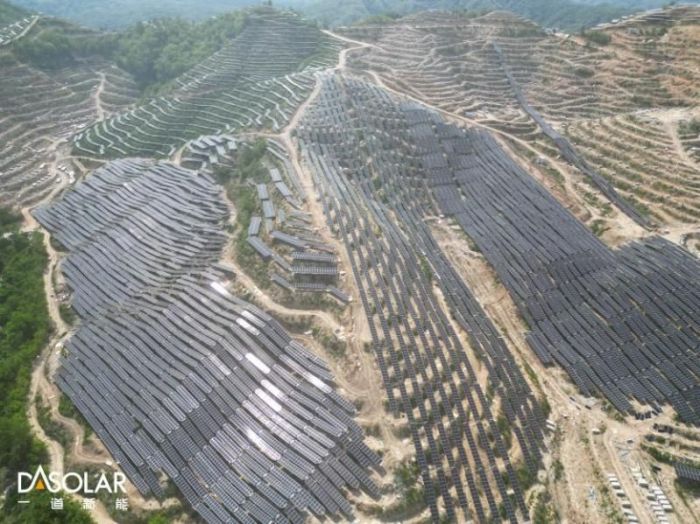
High headroom
Designed with elevated columns, the flexible bracket structure meets site headroom requirements. The flexible bracket structure offers maximum headroom ≥ 10m, minimizing environmental disruption and mitigating the adverse effects of terrain undulations. Photovoltaic module arrays are arranged in space, increasing module density per unit area by precisely controlling inter-row spacing. Consequently, the tilt angle of the modules in this structure can be optimized for maximum efficiency, ensuring high yields for PV plants. This optimization not only enhances sunlight absorption but also improves module efficiency. High headroom enables the integration of photovoltaic power generation with agriculture, forestry, and fishing, maximizing space beneath the modules. Consequently, the PV plant can generate more electricity while efficiently utilizing the land. This increases output and added value per unit area of land, promoting the coordinated development of economic and ecological benefits
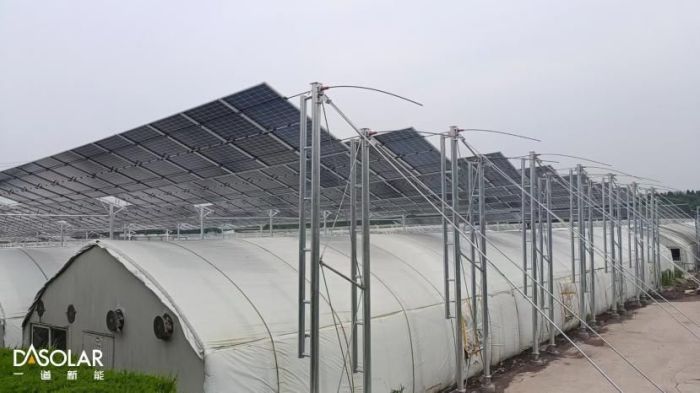
High stability
As for load-bearing cables for the modules, DAS Solar's flexible bracket employs 2 prestressed galvanized steel strands. The cables' sag is controlled via tensioning prestress, effectively resisting external loads. Simultaneously, the north-south oriented rows are specially equipped with cable-rod wind stabilization systems, creating a spatial structure of cables in both the east-west and north-south directions within the array. By enhancing the out-of-module torsional stiffness and the damping of the structure, the flexible bracket significantly improves wind vibration resistance and mitigates the risk of hidden cracks in the modules due to twisting and collisions. Currently, the flexible bracket has undergone multiple extreme condition tests and module anti-hidden crack tests, confirming its robust stability and safety.
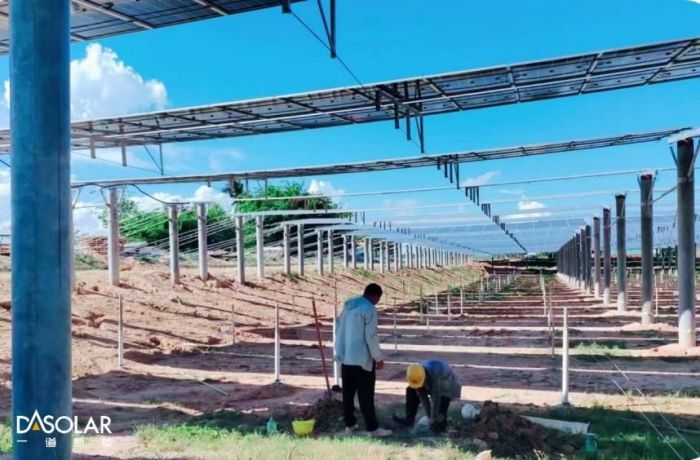
Less investment
DAS Solar's prefabricated flexible bracket is installed on-site using the slip method, eliminating the need to match mounting holes in purlins. These brackets demand less installation effort than traditional steel structures, streamlining the process for greater efficiency. The reduction in land area and pile foundation density significantly enhances construction efficiency. Moreover, the decreased use of steel and basic materials due to the reduced land area effectively lowers the overall cost of PV plants. Consequently, PV plants become more cost-effective, delivering superior returns and demonstrating optimal financial efficiency.
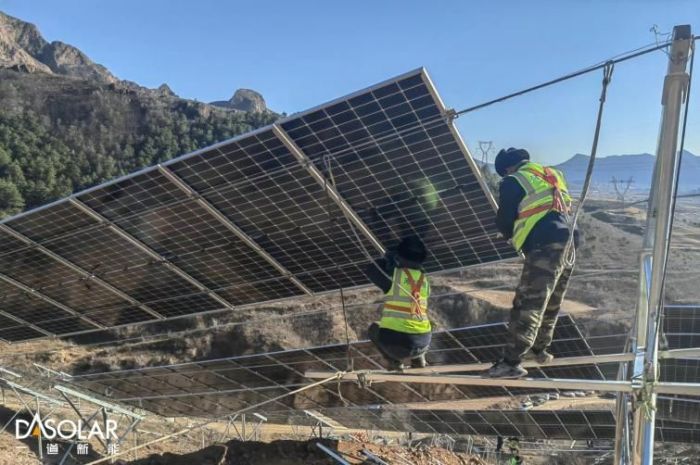
Wide application
Adaptable to various terrains and climates, DAS's flexible bracket boasts three core advantages: high headroom, large spans, and high stability. It effectively addresses challenges in traditional photovoltaic installations, such as high land occupancy, difficulty in reuse, and high costs. It meets installation requirements in full scenarios, addressing challenges associated with traditional photovoltaic installations, such as high land occupancy, difficulty in reusing, and high project costs. This propels the widespread application of integrated "photovoltaic+" projects in agriculture, forestry, fisheries, and grazing.
DAS Solar flexible bracket has been successfully applied in various places, including Qinxian in Shanxi, Daxing, Yimen, Nujiang, and Tanglang, by leveraging advanced and reliable technological advantages. Additionally, it has been successfully applied to China's first highway slope photovoltaic trial project, providing reference and experience for the subsequent worldwide development of "photovoltaic +" highways.
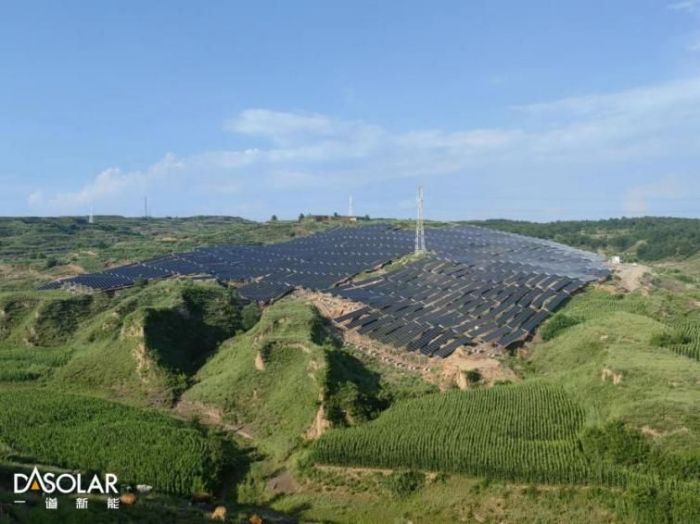
As a leader in N-type technology and a full scenario application provider, DAS Solar will continue to rely on technological innovation as its driving force. Actively exploring development and construction in various scenarios, it aims to provide more possibilities for the development and construction of "photovoltaic+" projects in full scenarios.

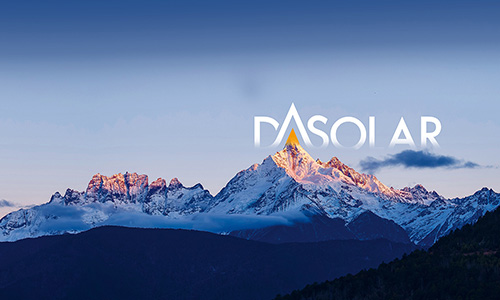




 浙公网安备33080302000236
浙公网安备33080302000236